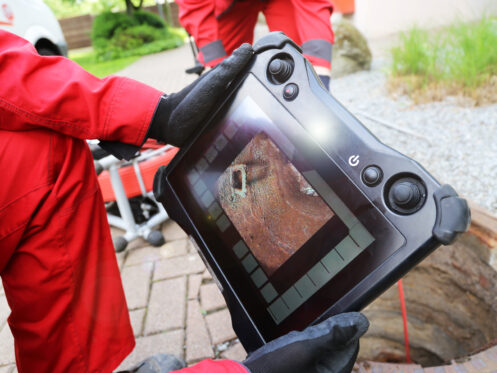When homeowners face a sewer line issue, they typically have two options. One category is traditional excavation, and the other is trenchless sewer repair. Each approach has a particular set of benefits and downsides. Knowing the differences helps homeowners make educated choices about what solution would work best for their home and circumstances. This detailed comparison of traditional and trenchless sewer repair methods covers the pros and cons of both approaches.
Traditional Sewer Repair: The Standard Excavation Approach
Also called the excavation method, traditional sewer repair involves digging out a trench in order to physically access the broken or damaged pipe. Doing the job this way permits direct access to the afflicted sewer line so workers can repair or replace the problematic section.
Handling matters this way offers several notable benefits. Comprehensive replacements and repairs ensure full functionality is restored, and that’s useful if the pipe collapses or is seriously damaged beyond potential repair. The accessibility involved with this approach is also useful for complicated issues, including extensive invasions of tree roots, pipe collapses, and total blockages that trenchless methods can’t sufficiently address. In some circumstances, the traditional excavation approach might be cheaper in terms of upfront material costs and labor, but it does vary from one situation to the next.
Traditional sewer repair can be an effective solution, but it’s not a perfect one. The biggest downside is how much damage happens to parts of your property, including driveways, sidewalks, and landscaping. Trench excavation is necessary to access the pipe, and it involves tearing up anything above the pipe. Restoration is costly and time-consuming. The upfront materials costs might be lower, but the labor, extended project time, and landscaping repairs can make the overall expenses considerable. Work takes longer because heavy machinery might be necessary to dig up the old pipe before replacing it.
Trenchless Sewer Repair: A Modern Solution
As the name indicates, trenchless sewer repair avoids extensive excavation and digging. This approach utilizes advanced techniques, such as pipe lining or bursting, to replace and repair damaged sewer lines in ways that minimize the disruption to the surrounding terrain. Pipe lining uses a flexible liner that’s coated with resin; it’s inserted into the impacted pipe before being inflated and given time to cure, a process that effectively makes a new pipe inside the old one. Alternatively, pipe bursting pulls a new pipe through the impacted one while also breaking the old one apart; the new one replaces the old one without full excavation.
Trenchless sewer repair minimizes property disruption, finishes faster, produces long-lasting results, and is friendly to the environment. Since only small access points are necessary, the digging is far less extensive and preserves more of the landscaping and driveways for more affordable restorations. A trenchless repair usually happens faster than a traditional one; many situations are finished within one or two days. Durable materials are used that might last decades, and new pipes resistant to root intrusion and corrosion won’t need replacement as quickly in the future.
Unfortunately, trenchless sewer repair isn’t applicable to all situations. Badly misaligned or totally collapsed pipes might not be candidates for this repair method. Small excavations might still be necessary if there’s no cleanout or access point available. The technology and equipment used in trenchless repairs might have higher upfront costs to start the project. However, overall costs might still be lower because of faster completion times, lower labor costs, and reduced property restoration. Availability can be another issue if you don’t find plumbing professionals who offer this particular service.
Which Method Is Best for Your Home?
Deciding between traditional and trenchless sewer repair mostly depends on the layout of your property, how extensive the damage is, and your budget. Traditional methods might be more suitable for situations with limited access points or seriously damaged pipes. Alternatively, trenchless methods can be the better option in cases where your priorities include managing long-term costs, saving time, and preserving your landscaping.
Before you decide, consult a sewer repair specialist or professional plumber who can analyze your particular circumstances. They can walk you through the pros and cons of your different options and make effective recommendations. Regardless of what you choose, addressing sewer line issues quickly is crucial to preventing more damage and the costly repairs that come with them in the future.
Contact Us Today
If your home is in Brighton or the surrounding Colorado communities, then TYCO Plumbing has the expertise to help you with this particular problem. We provide a variety of plumbing services, including leak detection, water softeners, gas piping, water filtration and softeners. We also handle kitchen garbage disposals, bathroom toilets, and shower installation and repair. Contact TYCO Plumbing for your home’s sewer repair services.



